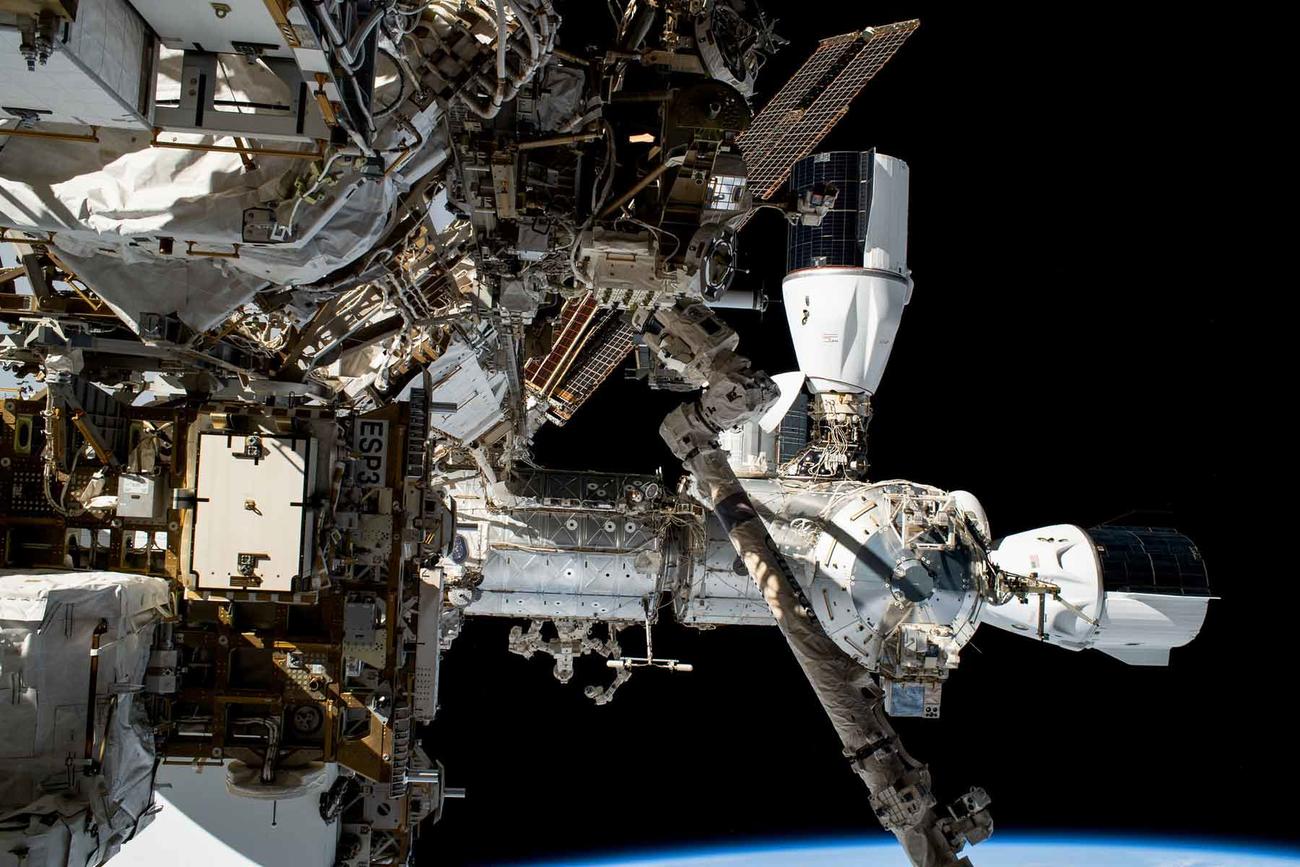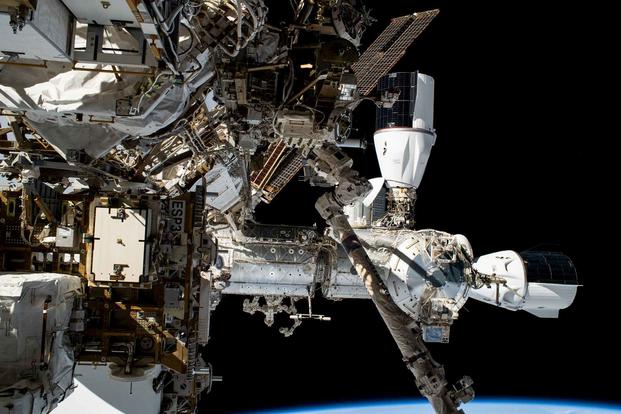

NASA said Wednesday that it has selected SpaceX to build the one-of-a-kind space vehicle meant to propel the now-decades-old International Space Station to a reentry at the end of its life without damaging anything on the ground.
The announcement came on the same day that the crew of the ISS had to unexpectedly board their capsules to wait for the outcome of a near collision with space debris from a satellite.
The ISS is already four years past its originally planned operational lifespan and has faced a raft of recent problems — air leaks from the structure have worsened and pieces of ISS-related space junk, including jettisoned parts of SpaceX Dragon capsules, have recently crashed to Earth after failing to burn up in the atmosphere. Also, the ballooning inventory of satellites in orbit has placed the ISS in added danger of a collision.
Read Next: Army Makes It Harder for Commanders to Deny Soldier Leave for Abortions
In its announcement of SpaceX’s contract award, NASA expressed the fleeting nature of the new vehicle’s existence. Like the space station, the U.S. Deorbit Vehicle “is expected to destructively [break up] as part of the re-entry process.”
The agency provided details, in a white paper also published Wednesday, of the deorbiting plan along with an explanation of why it and its four international agency partners settled on deorbiting rather than other ideas, which were proposed by people who wanted to see at least some of the space station survive for its historical value.
Neither item published Wednesday described any details of the coming vehicle’s design.
To propel the space station onto its final trajectory for a desirable reentry, NASA requested proposals for “a new or modified spacecraft using a large amount of propellant.” Between the SpaceX Dragon’s crewed and cargo-only versions, the capsules have visited the ISS dozens of times, but the announcement didn’t say whether the plan involves modifying a Dragon.
The contract is worth $843 million. Dragon capsules launch on SpaceX Falcon 9 rockets. The cost of the launch will be part of a separate contract.
While getting a new vehicle built, NASA will have only worse options in the event of an emergency.
For a spacecraft to reenter the atmosphere, the U.S. government requires a 1-in-10,000 likelihood or less of the debris resulting in a “public risk,” according to the white paper. With the vehicles that currently visit the station, such as Russia’s Progress cargo capsules that already provide propulsion, the deorbiting wouldn’t meet that standard.
But the planned end to the space station’s service isn’t the only reason it might need to deorbit.
NASA’s safety advisers, the Aerospace Safety Advisory Panel, recommended in 2022 that NASA address not only “the lack of a well-funded, controlled reentry and deorbit plan” but also the growing likelihood of an emergency happening in the meantime.
As recently as Wednesday, crews had to evacuate the interior of the ISS to wait inside their capsules, ready to fly home in the event of damage, as debris passed close by from a satellite that broke up in orbit.
The current crew members include Navy Cmdr. Matthew Dominick, commander of the most recent Crew Dragon mission, and retired Navy Capts. Barry “Butch” Wilmore and Sunita “Suni” Williams, commander and mission pilot respectively of the first human test flight of Boeing’s Starliner capsule.
A NASA spokesperson told Military.com that, in the case of a mission-ending emergency between now and the projected end of the station’s operations in 2030, the plan is to deorbit with the propulsion from a Russian Progress capsule, a solution already deemed insufficient as the final plan. NASA officials did not address what might be done if the Progress capsule also got hit in the collision and the space station began to naturally fall back to Earth uncontrolled.
In addition to the added risk of a collision, the ISS has faced issues including air leaks that worsened earlier this year.
However, “NASA and its international partners regularly conduct structural analyses of the station to ensure it continues to be safely and productively crewed and operated,” according to the white paper. “These analyses show ample margin to fly through at least 2030.”
Meanwhile, recent news that debris from the ISS reached the ground when it was supposed to burn up, including an old battery pack that struck a home in Florida and parts of an expendable Crew Dragon cargo trunk that fell in North Carolina, could have implications for the success of the deorbiting.
The flight controllers for Skylab discovered the limitations of the mathematical estimates made to predict how and when a space object will burn up in the atmosphere in 1979, when that earlier space station failed to disintegrate as predicted and their final maneuver overshot the target by thousands of miles, scattering debris in a remote part of Australia.
The white paper also breaks down the alternatives to deorbiting that NASA rejected as infeasible or too dangerous, including an uncontrolled reentry (too risky to people on the ground); any kind of disassembly for repurposing in space or returning to Earth (difficult because the ISS wasn’t built in a way that’s conducive to easy disassembly, and the space shuttles with their large cargo bays no longer fly); and boosting to a much higher orbit (the current astronaut capsules aren’t meant to go higher, and the ISS can’t operate without a crew, among other reasons).
SpaceX will build the vehicle then turn it over to NASA to own and operate for the deorbiting. NASA’s announcement did not specify a delivery date.
Related: Starliner Crew to Join Storied Lineup of Military Astronauts Who Test-Flew U.S. Spacecraft
